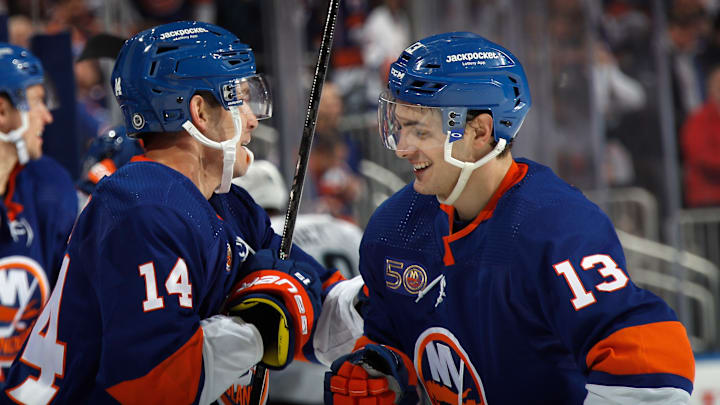PLUS
Horvat is a very, very good hockey player. At the time of the trade, he was eighth in the NHL in goals, with more goals than Leon Draisaitl, Brayden Point, and William Nylander (if you're pointedly asking "And then what happened??" I promise I'll get to that). This was not typical for his career, but he had shown goalscoring talent in the past with 31 goals the previous year.
Horvat is also excellent at an underrated aspect of the game: faceoffs. Mat Barzal's career faceoff percentage has hovered between 41% and 46% before plummeting to 35.6% last season. Horvat, on the other hand, was at 57% both last year and the year before. Moving Barzal to Horvat's wing results in the Islanders gaining possession much more often.
Speaking of Barzal, the Islanders' star player displayed some excellent chemistry with the new addition. In the seven games they played together, Horvat scored three goals, and Barzal had eight points. Of course, seven games aren't enough time to make any definite assertions, and Barzal, unfortunately, was injured for the rest of the season, but there were encouraging signs.
At 28, Horvat is not exactly young, but he's certainly not old. He fills a need for the Islanders - a goalscoring, faceoff-winning center who can allow Barzal the freedom he needs. Objectively speaking, he's the best linemate Barzal has had since his rookie year when he played with John Tavares.
ABSOLUTELY BO HORVAT 🚨
— NHL (@NHL) February 10, 2023
Mathew Barzal (@Barzal_97) and @BoHorvat C-O-N-N-E-C-T for Bo's second goal in just as many games with the @NYIslanders. pic.twitter.com/RFuwyOF2YY
